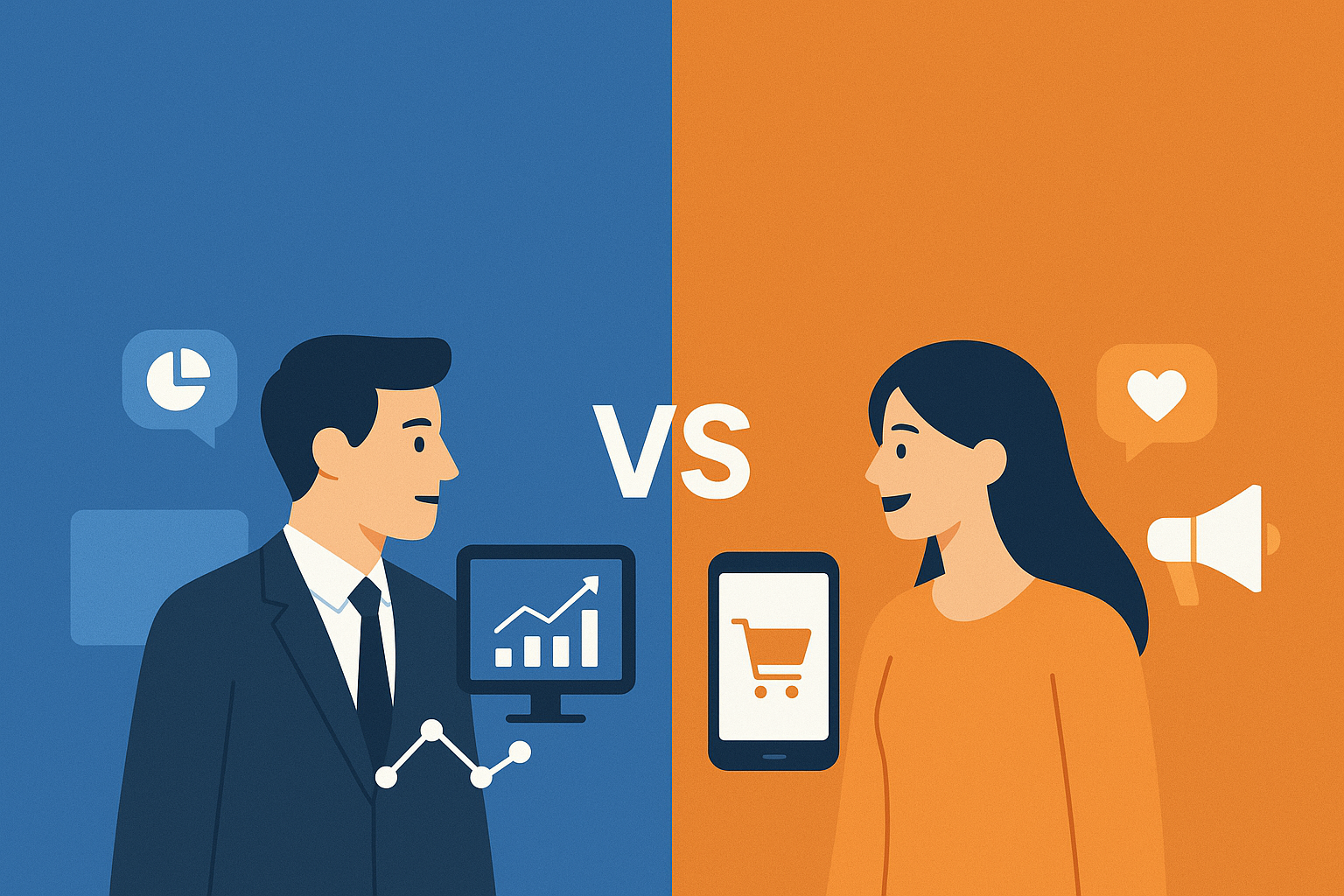B2B vs B2C Advertising: How Channels and Strategies Differ

Senior WebCoder

When it comes to marketing, one size doesn’t fit all. The strategy used to target a business (B2B) is very different from the one used to reach individual consumers (B2C). Although both rely on advertising channels to promote products or services, the platforms, tone, messaging, and goals vary greatly.
✅ 1. Understanding the Core Difference: B2B vs B2C Audiences
| Aspect | B2B (Business-to-Business) | B2C (Business-to-Consumer) |
|---|---|---|
| Decision Makers | Professionals, business owners, stakeholders | Individual consumers or households |
| Buying Motivation | Logic, ROI, efficiency, long-term value | Emotions, lifestyle, convenience, status |
| Sales Cycle | Longer, involves multiple approvals | Short, often impulsive |
| Content Type | Educational, data-driven, case studies | Engaging, visual, emotional storytelling |
✅ 2. Best Advertising Channels for B2B Marketing
B2B audiences prefer platforms that help them learn, research, and make informed decisions.
a) LinkedIn Advertising
- Target users by job title, industry, company size.
- Great for promoting whitepapers, SaaS tools, and webinars.
b) Email Marketing & Newsletters
- Excellent for lead nurturing and client communication.
- High ROI and ideal for sharing reports, case studies, or updates.
c) Google Search Ads
- Targets high-intent searches like “best payroll software for startups”.
- Works well for solution-focused queries.
d) Webinars & Virtual Events
- Builds trust and authority with informative sessions.
- Generates highly qualified leads.
e) Industry Blogs & Content Marketing
- Long-form blogs, comparison guides, and case studies boost credibility.
- SEO is crucial for reaching decision-makers.
f) Trade Shows & Niche Forums
- Offline but effective for relationship building.
- Online communities on Reddit and LinkedIn groups also support niche targeting.
✅ 3. Best Advertising Channels for B2C Marketing
B2C marketing focuses on capturing emotions, trends, and convenience at scale.
a) Social Media Platforms
- Instagram & Facebook → Lifestyle products, storytelling, ads, Reels.
- TikTok & YouTube Shorts → Viral trends, influencers, short videos.
- Pinterest → Ideal for fashion, home décor, food, wedding planning.
b) Influencer & Affiliate Marketing
- Consumers trust opinions from creators they follow.
- Works well for beauty, fashion, food, and tech gadgets.
c) Google Display Ads & YouTube Ads
- Eye-catching banner and video ads for brand awareness.
- Retargeting helps recover abandoned carts.
d) SMS & Push Notifications
- Perfect for discount alerts, flash sales, and abandoned cart reminders.
e) Traditional Offline Advertising
- TV ads, billboards, radio, print media.
- Ideal for mass branding and local promotion.
✅ 4. Tone and Messaging Style Differences
| Element | B2B Messaging | B2C Messaging |
|---|---|---|
| Tone | Professional, educational | Emotional, fun, relatable |
| Focus | ROI, efficiency, expertise | Lifestyle, happiness, trends |
| Format | Case studies, whitepapers | Videos, memes, testimonials |
| Example CTA | “Book a demo” / “Download report” | “Shop Now” / “Buy Today” |
✅ 5. Budgeting & ROI Tracking
-
B2B Marketing
- Smaller audience, high-value leads.
- Tracks conversions like demo requests, email signups, meetings.
-
B2C Marketing
- Larger audience, lower purchase value.
- Tracks engagement, sales, CTR, repeat purchases.
✅ 6. Common Mistakes to Avoid
❌ Using emotional ads only for B2B instead of data-driven content
❌ Relying only on social media without email nurturing in B2B
❌ Writing long, complex messages for B2C audiences
❌ Ignoring analytics and wasting budget on broad targeting
✅ 7. Final Thoughts
B2B and B2C advertising strategies differ not just by platforms — but by the mindset of the buyer. Businesses seek logic and ROI, while consumers respond to emotion and experience. Aligning your advertising channel with the right audience mindset leads to higher engagement, conversions, and long-term success.
